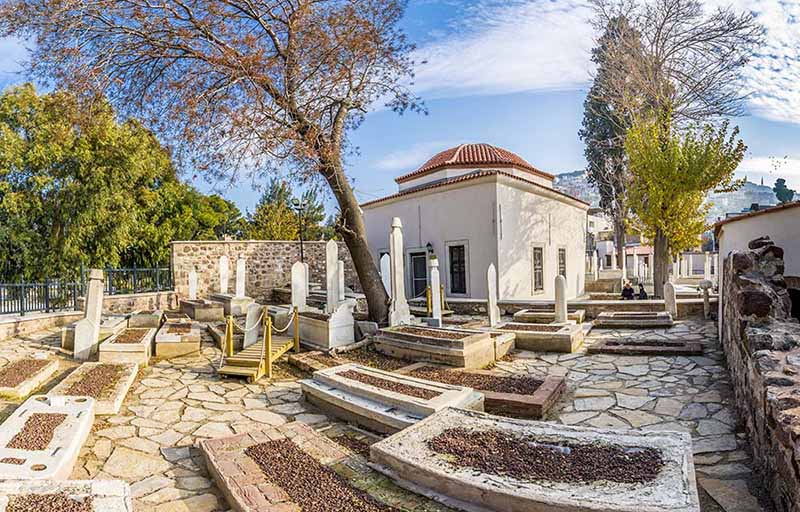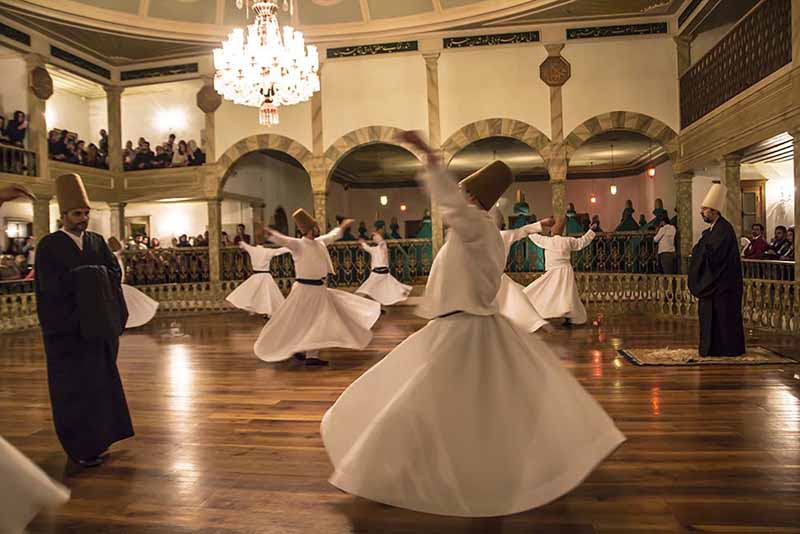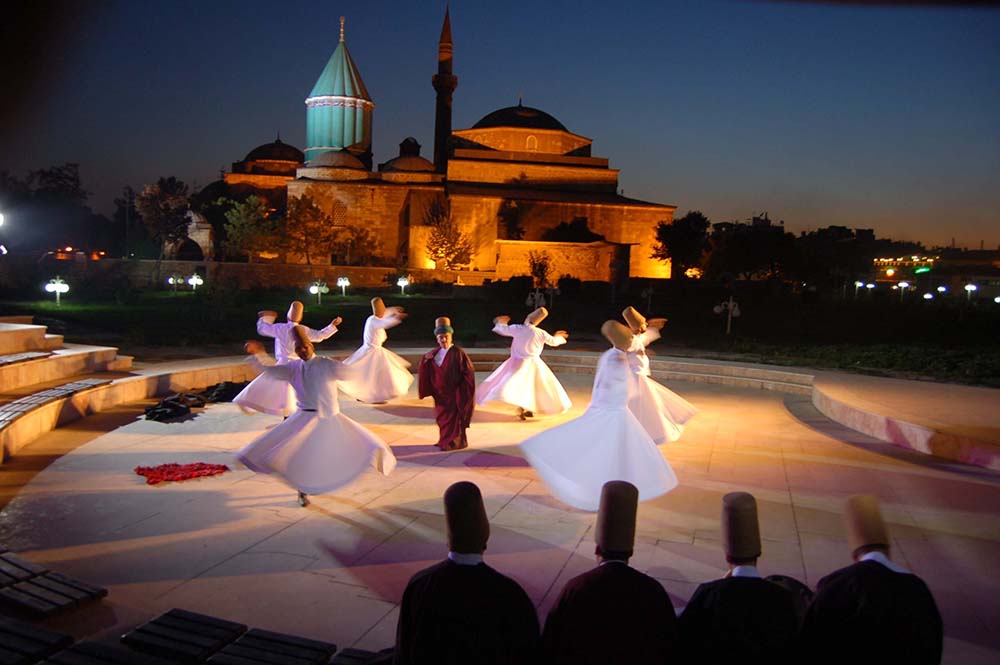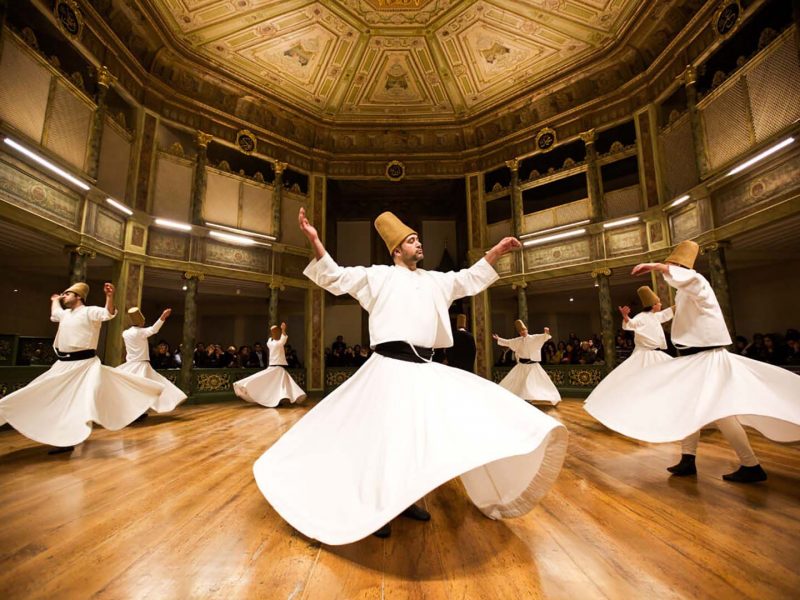Mevleviyeh started with Mevlânâ Celâleddin Rûmi during the Seljuk period. Later, Mevleviyeh spread from Anatolia all over the country during the Ottoman period. After the death of Mevlânâ Celâleddin Rûmi in 1273, his son Sultan Veled systematized his father’s thoughts and created semâ ceremonies. In fact, this has been regarded as a religious order and the name of the dervishes was “Mevlevihâne”.
There are many Mevlevihânes in Turkey. After the declaration of the Republic, religious lodges (zawiye and tekke) were closed. Today some of them still attract tourists as a cultural hotspot. Their buildings are witnesses of the history, although most of them have, unfortunately, been devastated over the years. Mevlevihânes that people can visit include:
Afyon Mevlevihânesi
Afyon Mevlevihânesi was founded by Sultan Divani, one of the grandchildren of Mevlânâ, in the 13th century. Throughout history, a variety of maintenance and restoration projects have been completed. However, it was ruined by fire, and construction of the present version was completed in 1908 with the help of Abdulhamit II.
Mevlevihâne was used until religious lodges were closed in 1925. It has been considered appropriate to use the space as a mosque through the present day.

Emir Sultan Zaviyesi Museum view in Izmir City. It was also the dervish lodge (tekke) of the Mevlevi order, better known as the whirling dervishes.
Konya Mevlânâ Dergâhı (Dervish lodge)
The Mevlânâ Dervish Lodge in Konya is an educational institution of Bahaeddin Veled, the father of Mevlânâ Celâleddin Rûmi. Later, this became a place where people who volunteered for it have been educated and disciplined. This structure is located in an area of approximately 6,225 square meters. There are dervish cells in the west of the complex. Now, this place is open as a museum.
Konya Cemel Ali Dede Zaviyesi (Zawiya)
Konya Cemel Ali Dede Zaviyesi was established by Cemel Ali Dede in the 13th century. Today, it is known as a mausoleum and a mosque. Mausoleum’s tiles trace back to 13th-century architecture. The mosque was designed as square and domed. Its shrine has a barrel vault. Tile repair is regularly ongoing.
Karaman Mevlevihânesi
This building was built in 1371 during the Karamanoğulları period and it is known as Mader-i Mevlânâ Mosque and Aktekke in Karaman. When you visit Mevlevihâne, you can see that it is a single-domed structure with high minarets. When you enter the mosque, you should know that the room on your left belongs to the mother and relatives of Mevlânâ Celâleddin Rûmi. At the same time, there are 21 cists.

Sufi whirling dervish (Semazen) dances at Yenikapi Mevlevihane in Istanbul. Semazen conveys God’s spiritual gift to those are witnessing the ritual.
Manisa Mevlevihânesi
According to epitaph, Manisa Mevlevihânesi was built in 1370s by Ishak Bey, son of Saruhan.
This İmaret was built with madrasah and a mosque and it is a part of larger complex. Currently, Mevlevihâne has been allocated to Celal Bayar University in Manisa for the Turkish History Research Center.
Kütahya Mevlevihânesi
It is known that Kütahya Mevlevihânesi was founded in the 13th century. The two-storey building has a square shape. The central part of the structure is covered with a wooden dome with a pulley on eight feet. Dervish cells, matbah, and bath, all typically parts of a Mevlevihâne lodge, have managed to last through today. The walls were built with rubble stones, and there is plaster on them. When the zawiya and tekkes were closed, this structure continued to be used as mosque.
The Mevlevihâne of Ankara
The complex was built in 1565 by Mimar Sinan. It is surrounded by external walls and is still used as a mosque and has two tombs. There is also a fountain here. The mosque is also part of the Mevlevihâne. However, we do not have clear information about the dervish part. According to the paintings, it is thought that the dervish building has wooden carcass and in rectangular shape.
Konya Şems-i Tabrizi Zawiya
Şems-i Tabrizi was one the most important people for Mevlânâ Celâleddin Rûmi’s life. Thus, it was built in the name of Şems-i Tebrizi during the Karamanoğulları period, in the early 15th century. But it is not known who did it. There is shrine next to Mevlevihâne which has Seljuk architectural features. The present structure was built in 1510 and has lasted through today with the restoration work. The big cemetery in the Konya Şems-i Tabrizi Zawiya is now a park, and there is also a shrine of Kubbeli Emir İshak Bey.
Turkey’s mevlevihânes are not limited to this list. Muğla Mevlevihânesi, Niğde Mevlevihânesi, Tire Mevlevihânesi, Edirne Mevlevihânesi, Eskişehir Mevlevihânesi, İstanbul Galata Mevlevihânesi, Konya Piri Mehmet Pasha Zaviyesi, Kilis Mevlevihâne, Tokat Mevlevihânesi, İstanbul Yenikapi Mevlevihânesi, Gaziantep Mevlevihânesi, Yozgat Mevlevihâne, Urfa Mevlevihâne, and İstanbul Bahariye Mevlevihâne are other structures that we know of.
*Mevlevihâne: Lodge used by Mevlevi dervishes


